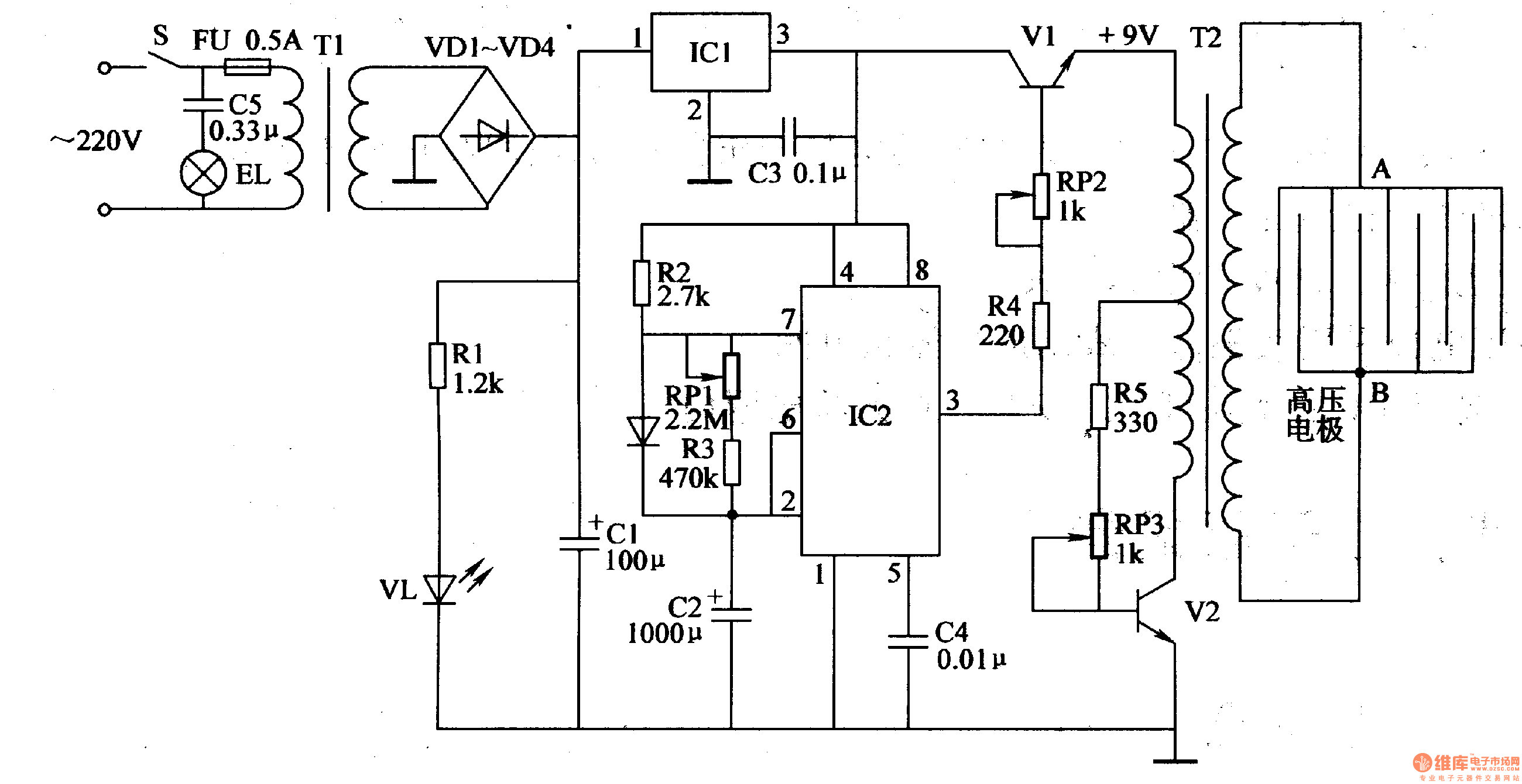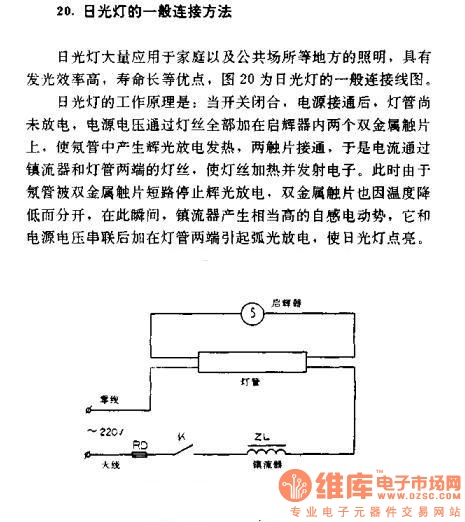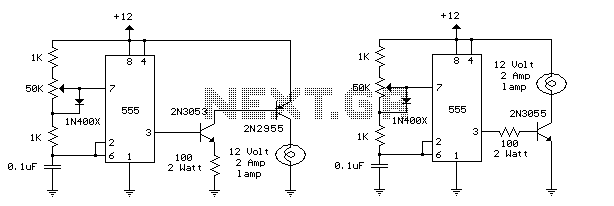
rear fog lamp for vintage cars

According to current legislation in many countries, vintage cars must also be fitted with a rear fog lamp. Modern vehicles incorporate circuitry associated with the fog lamp switch to prevent the fog lamp from activating when the lights are on, in case the driver forgets to turn it off after the fog has cleared. The circuit described here retrofits this technology for older vehicles. It is constructed around a dual JK flip-flop (type 4027). Transistor T3 functions as an emitter follower, supplying power to the circuit only when the lights are turned on. For safety, the power supply is sourced from the number plate lamp (L2), which remains operational even if the vehicle is inadvertently driven with only the parking lights on. The wire leading to the number plate lamp typically originates from the fuse box. Since the outputs of IC1a and IC1b are arbitrary upon power-up, the reset inputs are momentarily set high by the combination of capacitor C1, resistor R1, and transistor T1 when the lights are activated (ignition switch on). This action causes both Q outputs (pins 1 and 15) to go low. IC1a and IC1b are configured in toggle mode with J and K set high, while the Set inputs are grounded (inactive). The driver uses push-button switch S1 to generate a clock pulse, toggling the outputs of the flip-flops. A de-bouncing circuit formed by C2, R4, and T2 is crucial for producing a clean clock pulse, ensuring reliable circuit operation. Capacitors C1 and C2 are preferably tantalum types. The Q output of IC1b directly drives LED D1 (a low-current type, colored yellow in accordance with regulations). The Q output of IC1a powers relay Re1 via T4, activating the rear fog lamp L1. A free-wheeling diode D2 protects T4 from inductive voltage spikes that occur when the relay is de-energized. In older vehicles, the charging voltage from the generator or alternator is regulated by a mechanical voltage regulator, which is less reliable than the electronic versions found in modern cars. To address this, a Zener diode voltage-limiter circuit (D3 and R9) is included to keep the voltage at the emitter of T3 below 15 V, preventing damage to the 4027 from excessive voltage. The circuit's supply voltage is taken from the fuse box, which typically has an accessory terminal. It should be verified that this terminal is connected to the ignition switch. The pushbutton switch must be of the momentary-contact type (not latching), and it is essential to ensure that both the pushbutton and LED have a reliable ground connection. The LED should be positioned close to the button for optimal accessibility.
The described circuit serves as an effective solution for integrating a rear fog lamp into vintage vehicles, ensuring compliance with current regulations while enhancing safety. The use of a dual JK flip-flop allows for the toggling functionality needed for the fog lamp operation, while the inclusion of a de-bouncing circuit ensures that the clock pulse generated by the push-button switch is stable and reliable.
The circuit design emphasizes safety by sourcing power from the number plate lamp, which serves as a failsafe against accidental activation when only parking lights are in use. The incorporation of a Zener diode voltage-limiter circuit is a critical design feature that protects sensitive components from voltage fluctuations, a common issue in older vehicles with mechanical regulators.
The relay activation mechanism is straightforward yet effective, allowing for the fog lamp to be energized only when required, thus preventing unnecessary use. The specification for low-current LED D1 aligns with modern requirements for vehicle lighting, providing visibility without drawing excessive power.
Overall, this circuit design is a practical approach to retrofitting older vehicles with modern safety features, ensuring compliance with legislation while enhancing the functionality of vintage cars. Proper installation and verification of connections will be essential for optimal performance and reliability.According to current legislation in many countries, vintage cars must also be fitted with a fog lamp at the rear. In modern cars, there is a bit of circuitry associated with the fog lamp switch to prevent the fog lamp from going on when the lights are switched on if the driver forgot to switch it off after the last patch of fog cleared up.
The cir cuit described here extends that technology back in time. The circuit is built around a dual JK flip-flop (type 4027). T3 acts as an emitter follower, and it only supplies power to the circuit when the lights are switched on. For safety reasons, the supply voltage is tapped off from the number plate lamp (L2), because it is on even if you accidentally drive with only the parking lights on.
The wire that leads to the number plate lamp usually originates at the fuse box. As the states of the outputs of IC1a and IC1b are arbitrary when power is switched on, the reset inputs are briefly set high by the combination of C1, R1 and T1 when the lights are switched on (ignition switch on). That causes both Q outputs (pins 1 and 15) to go low. IC1a and IC1b are wired in toggle mode (J and K high). The Set inputs are tied to ground (inactive). The driver uses push-button switch S1 to generate a clock pulse that causes the outputs of the flip-flops to toggle.
The de-bouncing circuit formed by C2, R4 and T2 is essential for obtaining a clean clock pulse, and thus for reliable operation of the circuit. C1 and C2 should preferably be tantalum capacitors. The Q output of IC1b directly drives LED D1 (a low-current type, and yellow according to the regulations).
The Q output of IC1a energizes relay Re1 via T4 and thus applies power to the rear fog lamp L1. Free-wheeling diode D2 protects T4 against inductive voltage spikes that occur when the relay is de-energised. In older-model cars, the charging voltage of the generator or alternator is governed by a mechanical voltage regulator.
These regulators are less reliable than the electronic versions used in modern cars. For that reason, a Zener diode voltage-limiter circuit (D3 and R9) is included to keep the voltage at the emitter of T3 below 15 V and thus prevent the 4027 from being destroyed by an excessively high voltage. The supply voltage for the circuit is tapped off from the fuse box. An accessory terminal is usually present there. Check to make sure it is fed from the ignition switch. The pushbutton switch must be a momentary-contact type (not a latching type). Ensure that the pushbutton and LED have a good ground connection. Fit the LED close to the button. 🔗 External reference
The described circuit serves as an effective solution for integrating a rear fog lamp into vintage vehicles, ensuring compliance with current regulations while enhancing safety. The use of a dual JK flip-flop allows for the toggling functionality needed for the fog lamp operation, while the inclusion of a de-bouncing circuit ensures that the clock pulse generated by the push-button switch is stable and reliable.
The circuit design emphasizes safety by sourcing power from the number plate lamp, which serves as a failsafe against accidental activation when only parking lights are in use. The incorporation of a Zener diode voltage-limiter circuit is a critical design feature that protects sensitive components from voltage fluctuations, a common issue in older vehicles with mechanical regulators.
The relay activation mechanism is straightforward yet effective, allowing for the fog lamp to be energized only when required, thus preventing unnecessary use. The specification for low-current LED D1 aligns with modern requirements for vehicle lighting, providing visibility without drawing excessive power.
Overall, this circuit design is a practical approach to retrofitting older vehicles with modern safety features, ensuring compliance with legislation while enhancing the functionality of vintage cars. Proper installation and verification of connections will be essential for optimal performance and reliability.According to current legislation in many countries, vintage cars must also be fitted with a fog lamp at the rear. In modern cars, there is a bit of circuitry associated with the fog lamp switch to prevent the fog lamp from going on when the lights are switched on if the driver forgot to switch it off after the last patch of fog cleared up.
The cir cuit described here extends that technology back in time. The circuit is built around a dual JK flip-flop (type 4027). T3 acts as an emitter follower, and it only supplies power to the circuit when the lights are switched on. For safety reasons, the supply voltage is tapped off from the number plate lamp (L2), because it is on even if you accidentally drive with only the parking lights on.
The wire that leads to the number plate lamp usually originates at the fuse box. As the states of the outputs of IC1a and IC1b are arbitrary when power is switched on, the reset inputs are briefly set high by the combination of C1, R1 and T1 when the lights are switched on (ignition switch on). That causes both Q outputs (pins 1 and 15) to go low. IC1a and IC1b are wired in toggle mode (J and K high). The Set inputs are tied to ground (inactive). The driver uses push-button switch S1 to generate a clock pulse that causes the outputs of the flip-flops to toggle.
The de-bouncing circuit formed by C2, R4 and T2 is essential for obtaining a clean clock pulse, and thus for reliable operation of the circuit. C1 and C2 should preferably be tantalum capacitors. The Q output of IC1b directly drives LED D1 (a low-current type, and yellow according to the regulations).
The Q output of IC1a energizes relay Re1 via T4 and thus applies power to the rear fog lamp L1. Free-wheeling diode D2 protects T4 against inductive voltage spikes that occur when the relay is de-energised. In older-model cars, the charging voltage of the generator or alternator is governed by a mechanical voltage regulator.
These regulators are less reliable than the electronic versions used in modern cars. For that reason, a Zener diode voltage-limiter circuit (D3 and R9) is included to keep the voltage at the emitter of T3 below 15 V and thus prevent the 4027 from being destroyed by an excessively high voltage. The supply voltage for the circuit is tapped off from the fuse box. An accessory terminal is usually present there. Check to make sure it is fed from the ignition switch. The pushbutton switch must be a momentary-contact type (not a latching type). Ensure that the pushbutton and LED have a good ground connection. Fit the LED close to the button. 🔗 External reference





